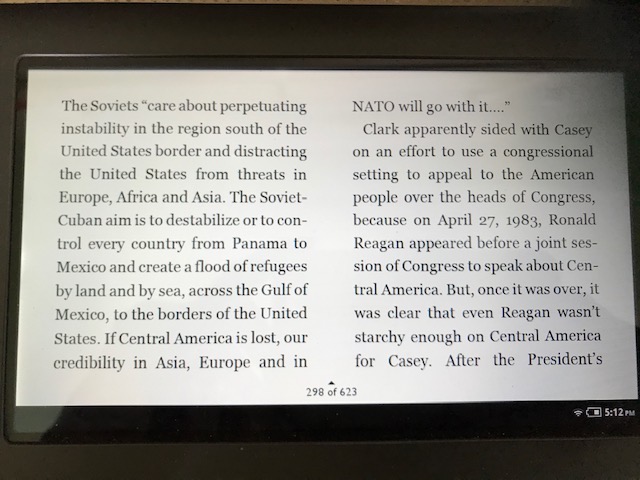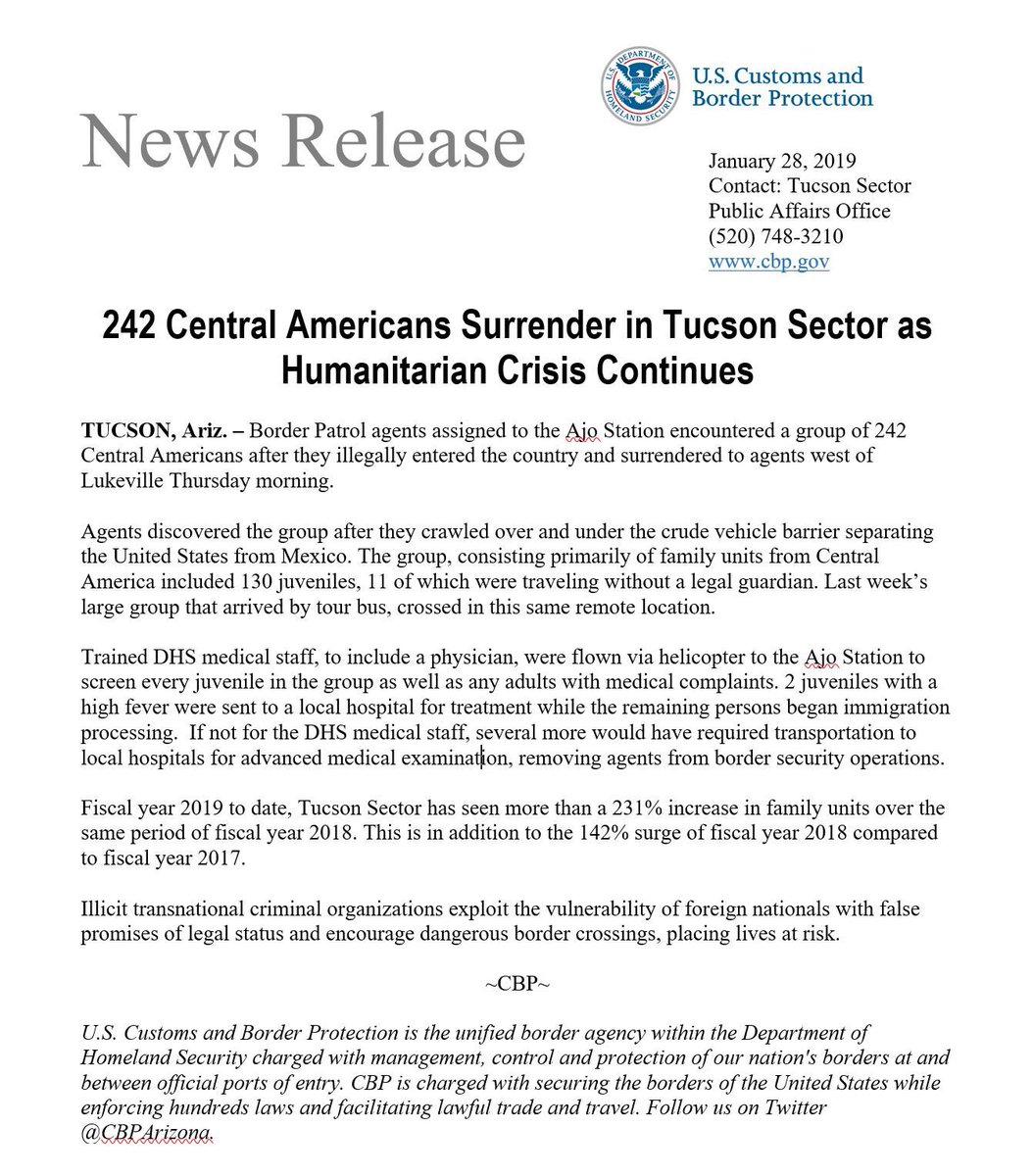Well, we can for sure say that the Democrats side with the Communists, Marxists and Revolutionaries.
Hat tip to Glenn Beck and my buddy Ami Horowitz for the great foot work and investigations to determine where this illegal insurgency is really coming from. Beck pulled out his chalkboard again and his presentation is a good one.
So, while these democrats are not students of history while others have very short memories, there is a longer history to all of this immigration crisis. You see, a few years ago, I read a book titled From the Shadows, written by former CIA Director Robert Gates. Gates was also the Secretary of Defense as part of his long government service resume. He wrote that book in 1996. A particular page stayed in my memory and I did a search in my Book Nook today to find it.

Okay is there more? Yes.There are so many moving parts to the legacy immigration crisis today. Who is to blame? Too many it seems. But for context read on, history does repeat itself.
Going back to an article/summary from 2006, how did we get to this cockamamie asylum policy? It goes to a crisis that was born in 1980.
Citation: The year 1980 marked the opening of a decade of public controversy over U.S. refugee policy unprecedented since World War II. Large-scale migration to the United States from Central America began, as hundreds of thousands of Salvadorans, Guatemalans, and Nicaraguans fled north from civil war, repression, and economic devastation. That same year, in the last months of the Carter administration, the U.S. Congress passed the Refugee Act, a humanitarian law intended to expand eligibility for political asylum in the United States.
The Refugee Act brought U.S. law into line with international human rights standards, specifically the 1951 UN Convention and the 1967 Protocol Relating to the Status of Refugees. The United States had ratified the Protocol in 1968, thus becoming bound by the Convention’s provisions. While the previous law recognized only refugees from Communism, the Refugee Act was modeled on the convention’s non-ideological standard of a “well-founded fear of persecution.”
The coincidence of the Central American exodus with the passage of the Refugee Act set the stage for a decade-long controversy that ultimately involved thousands of Americans. The protagonists in the controversy included, on one side, immigrants’ rights lawyers, liberal members of Congress, religious activists, and the refugees themselves. On the other side were President Reagan and his administration, the State Department, the Department of Justice (including the Immigration and Naturalization Service (INS) and the Federal Bureau of Investigation (FBI)), and conservative members of Congress. The first group invoked international human rights and humanitarian and religious principles, while the Reagan administration’s arguments centered on national security and the global fight against Communism.
The public debate took place in a number of arenas and with several sets of participants. The federal courts were the venue for class-action cases contesting systemic INS violations of refugee rights, as well as for the criminal prosecution of religious humanitarians.
Unprecedented numbers of Americans became involved through their churches and synagogues, which proclaimed themselves “sanctuaries,” as well as in bar association efforts to provide pro bono representation to Salvadorans and Guatemalans. Throughout the decade, in hundreds of individual immigration hearings, lawyers for asylum applicants and INS lawyers waged a low-intensity struggle over the nature of the conflict in Central America and the rights of individual Central Americans to asylum status.
In Congress, members debated the war and laws aimed at helping Central Americans rejected as refugees. The refugees themselves became a voice in the U.S. public debate. They formed their own community assistance groups and advocacy centers, which worked with lawyers, religious groups, and the movement against United States involvement in Central America.
Cold War by Proxy and Human Rights in Central America
In El Salvador and Guatemala, civil war had been years in the making, as oligarchies supported by corrupt military leaders repressed large sectors of the rural population. In Nicaragua, the socialist revolutionary Frente Sandinista had ousted the brutal right-wing dictator Anastasio Somoza in 1979. The civil war in El Salvador increased in intensity in early 1980. Government-supported assassins gunned down Archbishop Oscar Romero at the altar shortly after he had publicly ordered Salvadoran soldiers to stop killing civilians. In December 1980, four U.S. churchwomen were assassinated in El Salvador, an act of brutality that brought the violence “home” to the U.S. public.
The administration of President Ronald Reagan, who came to power in January 1981, saw these civil wars as theaters in the Cold War. In both El Salvador and Guatemala, the United States intervened on the side of those governments, which were fighting Marxist-led popular movements. In Nicaragua, however, the United States supported the contra rebels against the socialist Sandinista government.
During much of the early 1980s, international human rights organizations (such as Amnesty International and Americas Watch — later part of Human Rights Watch) regularly reported high levels of repression in El Salvador and Guatemala, with the vast majority of human rights violations committed by military and government-supported paramilitary forces.
In El Salvador, the military and death squads were responsible for thousands of disappearances and murders of union leaders, community leaders, and suspected guerilla sympathizers, including priests and nuns. In Guatemala, the army’s counter-insurgency campaign focused on indigenous communities, resulting in thousands of disappearances, murders, and forced displacements.
The Intersection of Foreign Policy and Asylum Policy
It is estimated that between 1981 and 1990, almost one million Salvadorans and Guatemalans fled repression at home and made the dangerous journey across Mexico, entering the United States clandestinely. Thousands traveled undetected to major cities such as Washington, DC, Los Angeles, San Francisco, Boston, New York, and Chicago. However, thousands were also detained at or near the Mexico-U.S. border.
The Reagan administration regarded policy toward Central American migrants as part of its overall strategy in the region. Congress had imposed a ban on foreign assistance to governments that committed gross violations of human rights, thus compelling the administration to deny Salvadoran and Guatemalan government complicity in atrocities. Immigration law allowed the attorney general and INS officials wide discretion regarding bond, work authorization, and conditions of detention for asylum seekers, while immigration judges received individual “opinion letters” from the State Department regarding each asylum application. Thus the administration’s foreign policy strongly influenced asylum decisions for Central Americans.
Characterizing the Salvadorans and Guatemalans as “economic migrants,” the Reagan administration denied that the Salvadoran and Guatemalan governments had violated human rights. As a result, approval rates for Salvadoran and Guatemalan asylum cases were under three percent in 1984. In the same year, the approval rate for Iranians was 60 percent, 40 percent for Afghans fleeing the Soviet invasion, and 32 percent for Poles.
The Justice Department and INS actively discouraged Salvadorans and Guatemalans from applying for political asylum. Salvadorans and Guatemalans arrested near the Mexico-U.S. border were herded into crowded detention centers and pressured to agree to “voluntarily return” to their countries of origin. Thousands were deported without ever having the opportunity to receive legal advice or be informed of the possibility of applying for refugee status. Considering the widely reported human rights violations in El Salvador and Guatemala, the treatment of these migrants constituted a violation of U.S. obligations under the 1951 Refugee Convention.
As word of the conditions in Central America and the plight of the refugees began to come to public attention in the early 1980s, three sectors began to work in opposition to the de facto “no asylum” policy: the religious sector, attorneys, and the refugees themselves.
Although a number of Congressmen and women were influenced by the position of religious organizations, the administration thwarted their efforts. In 1983, 89 members of Congress requested that the attorney general and Department of State grant “Extended Voluntary Departure” to Salvadorans who had fled the war. The administration denied their request, stating such a grant would only serve as a “magnet” for more unauthorized Salvadorans in addition to the hundreds of thousands already present. In the late 1980s, the House of Representatives passed several bills to suspend the deportation of Salvadorans, but none passed the Senate.
The Sanctuary Movement
The network of religious congregations that became known as the Sanctuary Movement started with a Presbyterian church and a Quaker meeting in Tucson, Arizona. These two congregations began legal and humanitarian assistance to Salvadoran and Guatemalan refugees in 1980.
When, after two years, none of the refugees they assisted had been granted political asylum, Rev. John Fife of Southside Presbyterian Church in Tucson announced — on the anniversary of the assassination of Salvadoran Archbishop Oscar Romero — that his church would openly defy INS and become a “sanctuary” for Central Americans. The Arizona congregations were soon joined by networks of religious congregations and activists in Northern California, South Texas, and Chicago.
At the Sanctuary Movement’s height in the mid 1980s, over 150 congregations openly defied the government, publicly sponsoring and supporting undocumented Salvadoran or Guatemalan refugee families. Another 1,000 local Christian and Jewish congregations, several major Protestant denominations, the Conservative and Reform Jewish associations, and several Catholic orders all endorsed the concept and practice of sanctuary. Sanctuary workers coordinated with activists in Mexico to smuggle Salvadorans and Guatemalans over the border and across the country. Assistance provided to refugees included bail and legal representation, as well as food, medical care, and employment.
The defense of the Salvadorans and Guatemalans marked a new use of international human rights norms by U.S. activists. Citing the Nuremberg principles of personal accountability developed in the post-World War II Nazi tribunals, religious activists claimed a legal precedent to justify their violation of U.S. laws against alien smuggling. Other activists claimed that their actions were justified by the religious and moral principles of the 19th-century U.S. abolitionist movement, referring to their activities as a new “Underground Railroad.” Many U.S. religious leaders involved in the Sanctuary Movement had prior experience in the 1960s civil disobedience campaigns against racial segregation in the American South.
The Department of Justice responded by initiating criminal prosecutions against two activists in Texas in 1984, followed by a 71-count criminal conspiracy indictment against 16 U.S. and Mexican religious activists announced in Arizona in January 1985. The Texas trials resulted in split verdicts, one conviction and one acquittal.
The Arizona trial became a major focus of organizing and publicity for the Sanctuary Movement, attracting a stellar team of volunteer criminal defense attorneys. Although the Department of Justice maintained the case was an ordinary alien-smuggling prosecution, the general counsel of INS attended sessions of the lengthy trial.
Despite the judge’s order barring the defense from presenting evidence of conditions in El Salvador or Guatemala, the Sanctuary Movement managed to turn the publicity surrounding the trial into an indictment of the Reagan administration’s war in Central America and its treatment of the refugees. All the Arizona defendants were convicted, but none were sentenced to jail time. After the Arizona trials, the movement continued to attract more congregations.
The Department of Justice did not bring any more criminal indictments of sanctuary activists after the Texas and Arizona cases.
The Lawyers
Along the U.S.-Mexico border, from the Rio Grande Valley to San Diego, local lawyers and religious activists set up new legal services projects to help detained refugees. In Los Angeles, Boston, San Francisco, Washington, DC, Chicago, and other cities, existing nonprofit legal services projects and lawyers in private practice started representing individual refugees. Pro bono panels put together by local and national bar groups — including the National Lawyers Guild Immigration Project, the American Immigration Lawyers Association, and the American Bar Association — supplemented their work.
Through coordinated strategies in individual cases, these lawyers began to address detention conditions as well as develop the new case law of the Refugee Act. In California and Texas, civil rights lawyers filed class-action cases to establish basic due process rights. While some of the cases (regarding work authorization, translation assistance, and transfer of detainees between facilities) were not successful, other decisions established national standards for the treatment of detained Salvadoran and Guatemalan asylum seekers.
The refugees and their lawyers faced enormous challenges in asylum hearings, as the required opinion letters from the Department of State, which greatly influenced immigration judges, uniformly denied the existence of human rights violations in El Salvador and Guatemala. However, in some cases, attorneys won important victories before the Board of Immigration Appeals and in the federal circuit courts that established precedents helpful to all asylum applicants. Other efforts, such as an attempt to establish that all Salvadoran civilian young men were a social group persecuted by the government, were less successful.
Finally, a group of lawyers from the National Lawyers Guild, the American Civil Liberties Union, and other organizations brought a major, national class-action case on behalf of religious organizations, legal services projects, and Salvadoran and Guatemalan refugees, claiming that the administration’s wholesale denial of political asylum claims and prosecutions of those who assisted refugees violated their constitutional, statutory, and internationally recognized human rights.
In the case, known as American Baptist Churches v. Thornburgh, the federal courts had dismissed religious organizations’ claims. However, in 1991 the U.S. District Court in San Francisco approved a settlement that allowed the reopening of denied political asylum claims and late applications by refugees who had been afraid to apply. The decision also granted class members work authorization and protection from deportation.
The settlement agreement between the plaintiffs and the government (by that time the Bush administration) included language stating that government decisions on political asylum cases would not be influenced by foreign policy considerations.
The Refugees
In many cities, Salvadoran and Guatemalan refugees formed mutual assistance organizations. Projects such as Casa Guatemala, Casa El Salvador, Comite El Salvador, and others gave the community the ability to get legal advice and information about conditions back home as well as to learn about local health care and food assistance. These groups also worked with local lawyers’ organizations and religious and antiwar activists, who assisted in decisions regarding class-action litigation and supported individual asylum applicants.
Over 20 years later, a number of these immigrant-led projects, including Centro Presente in Boston, Centro Romero in Chicago, and El Rescate in Los Angeles, still exist as full-service, nonprofit legal and community services centers. Many of the leaders of these efforts remain active in the immigrants’ rights movement, as well as in other social justice projects in the United States, El Salvador, and Guatemala.
Congress
In 1990, after its earlier frustrations to address the Central American asylum seekers, Congress finally passed legislation allowing the president to grant Temporary Protected Status (TPS) to certain groups in need of a temporary safe haven. The first TPS legislation contained one provision (never codified as part of the Immigration and Nationality Act) explicitly designating Salvadorans for TPS.
Through the early 1990s, Salvadoran and Guatemalans who had arrived in the 1980s were able to stay in the country under a series of discretionary measures and under the terms of the 1991 settlement in the American Baptist Churches litigation. It was not until the late 1990s that their status was finally settled in a legislative agreement with the supporters of the anti-Sandinista Nicaraguans. The passage of the 1997 Nicaraguan Adjustment and Central American Relief Act finally allowed Salvadorans and Guatemalans protected under the American Baptist Churches settlement to apply for permanent residence.
Conclusion
What spurred the activism of the Sanctuary Movement and Central American refugees and their lawyers was the manner in which the Reagan administration linked the fate of individual asylum seekers to its foreign policy interests. Today, the use of immigration enforcement as a “magic bullet” for national security concerns requires close examination by the U.S. public.
Immigrant communities, members of Congress, policy analysts, religious leaders, and legal experts must determine whether the human rights of individual immigrants and asylum seekers are being trampled in a rush to create a public perception of effective security.
The development of a stronger anti-immigrant grassroots movement in certain areas of the country presents new challenges. Similarly, restrictions on access to the federal courts for review of certain immigration decisions create new obstacles for advocates to overcome. However, at the same time, immigrant-led organizations and immigrants’ rights coalitions have become more sophisticated in their lobbying and public education efforts.
The proimmigrant religious sector (particularly the Catholic Church) is vocal once again, as humanitarian assistance to the undocumented may be criminalized in proposed legislation. Whether the current decade will end with even limited victories for the human rights of immigrants is as yet unknown.








